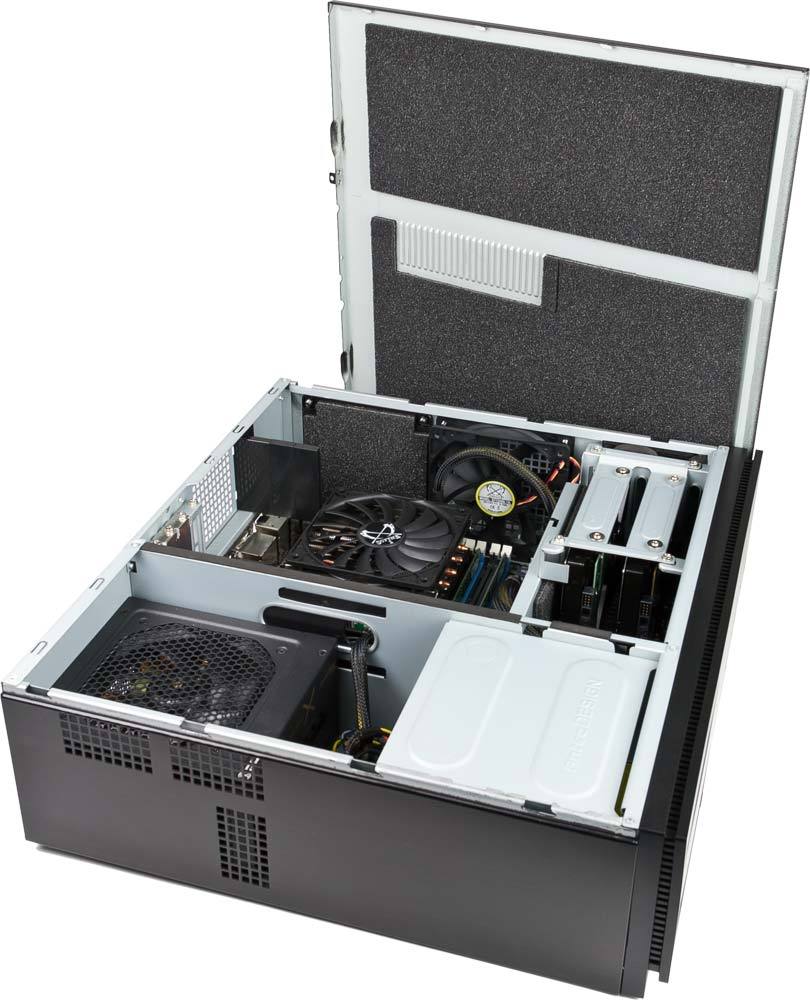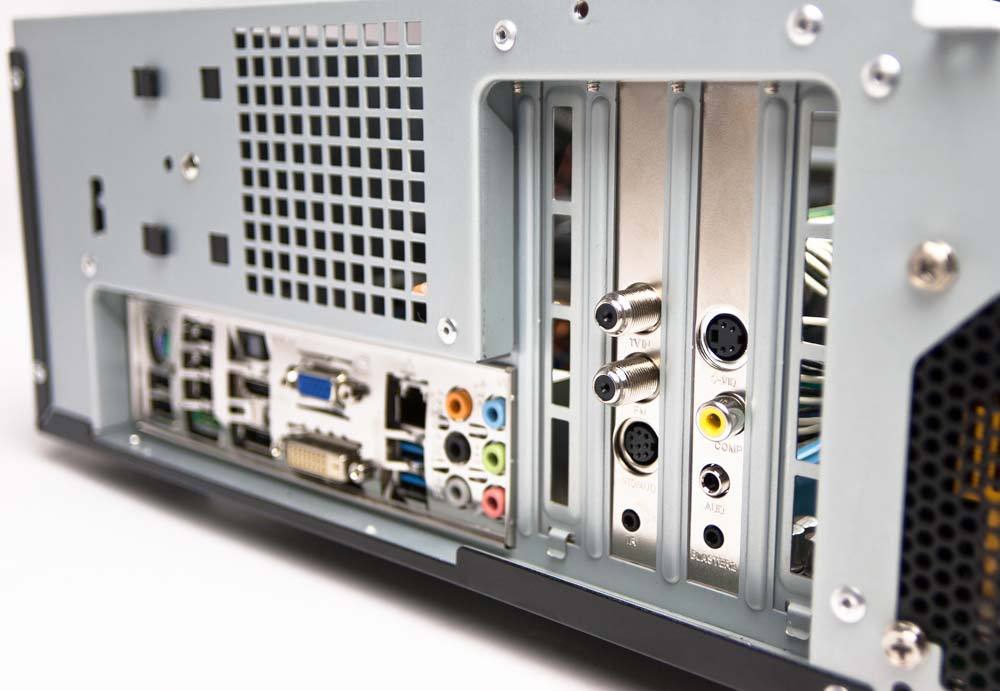Gaming At 1920x1080: AMD's Trinity Takes On Intel HD Graphics
Think you're pretty snazzy because your integrated graphics core plays mainstream games at 1280x720? We're on to bigger and better things, like modern titles at 1920x1080. Can AMD's Trinity architecture push high-enough frame rates to make this possible?
Professional Opinion: Gaming On Integrated Graphics, Cont.
Tom's Hardware: Noise is clearly critical in HTPCs. Are there some general strategies that you employ most often when trying to dampen the decibels?
Jon Bach: Keep the noisy parts away from the front of the chassis. If you can mount the hard drive further back, do it. Make sure you need all of the fans. Many times, there are fans blowing to a region of the chassis that does no good. If that’s the case, turn down (or off) that fan—just be careful! This is especially important for fans near the front of the chassis.
The nice thing about HTPCs is they sit back into a recess in your cabinet, which helps deaden the sounds coming from the rear of the unit. If you can, mount any mechanical disk drives horizontally. Vertically-mounted drives will transfer their vibration down into the shelving, which will amplify the sound like the head of a drum. Depending on the joints in your shelving, it can also cause a noisy buzz. Run an SSD for your operating system drive if possible, for this same reason. Consider running a utility to limit the speed of your optical drive to keep noise down while watching a movie.
Tom's Hardware: Excellent point about cabinet cooling. What are a couple of your most common approaches to handling this?
Jon Bach: Often, it just needs an opening—one at the top and one at the bottom—to let fresh air convect through. Sometimes an active fan needs to be installed. We can provide a Molex connector on the rear of our PCs, allowing the fan to be powered by the PC, and only run when the PC is on. Most often though, it just means we take care to use low-wattage CPUs and video cards, keeping heat generation down in the first place.
Tom's Hardware: Some of us have long been fans of Creative’s X-Fi line, finding integrated audio lackluster in comparison. With that said, we haven’t delved much into integrated audio over the last few years. Especially in this article’s gaming context, what are your thoughts about integrated audio for small HTPC platforms?
Jon Bach: I’d say 95% or more of our HTPC customers use the integrated audio. Part of it is that it is so easy to just run one HDMI cable. For those using a separate audio receiver, the optical audio out integrated into the motherboard is commonly used. Since Windows 7 and the widespread use of digital audio, we see less and less demand for discrete sound cards every day. There’s still a quality edge there, but even with our enthusiast clients, we haven’t seen a demand.
Get Tom's Hardware's best news and in-depth reviews, straight to your inbox.
Tom's Hardware: You’ve probably done some “celebrity-class” HTPC deployments. Any chance you could name drop a couple and maybe comment on what the budget-friendly HTPCs of today might have in common with those high-profile systems?
Jon Bach: The best ones are covered by NDA agreements, but boy do I wish I could talk about them! I can at least speak generally. There is one client to which we have deployed literally hundreds of home theater-oriented PCs over the last seven years. What impresses me most is how much the technology has changed over that time. In the beginning, we had to use PCs that cost over $3000. Their builds started without GPU acceleration, then moved into a time when very specific Nvidia cards were required for GPU acceleration. We were constantly watching CPU and GPU loads, making sure that we had the headroom necessary for consistent, smooth playback. Today, we don't even have to think about it. These PCs are playing 1080p content with almost no perceptible CPU load, using GPU acceleration found right there on the CPU. It’s amazing how easy modern technology has made what seven years ago was a huge challenge.
Current page: Professional Opinion: Gaming On Integrated Graphics, Cont.
Prev Page Professional Opinion: Gaming On Integrated Graphics Next Page Test Setup And Benchmarks-
azathoth Seems like a perfect combination for a Casual PC gamer, I'm just curious as to the price of the Trinity APU's.Reply -
luciferano They both have graphics that have HD in their name, but AMD's HD graphics are more *HD*, lol.Reply -
Nintendo Maniac 64 Err... did we really need both the A10-5800k and the A8-5600k? Seeing how both are already 100w unlocked CPUs, surely something like an A10-5800k vs a 65w A10-5700 would have been more interesting for an HTPC environment...Reply -
mayankleoboy1 Consoles set the bar for game developers. These iGPU's are comparable to the consoles and thats why games will run smooth here.Reply
With next gen consoles coming out next year, game devs will target them. Hence the minimum standard for games will rise, making the next gen games much slower on the iGPU's. So both AMD and Intel will have to increase performance much more in the next 1-2 years.
tl;dr : next gen games will run poorly on these igpu's as next gen consoles will set the minimum performance standard. -
mousseng Reply
Keep in mind, though, that that's exactly what's going to allow AMD and Intel to advance their hardware faster than games will, as they were discussing in the article (first page of the interview). Look how far Fusion and HD Graphics have come over the past 3 years, and look how long the previous console generation lasted - if that trend is anything to go by, I'm sure integrated graphics could easily become a viable budget gaming option in the next few years.9537609 said:tl;dr : next gen games will run poorly on these igpu's as next gen consoles will set the minimum performance standard. -
falchard Since when as AMD or nVidia actually taken on Intel graphics? Thats a bit insulting considering the disproportionate results time and time again.Reply -
luciferano mayankleoboy1Consoles set the bar for game developers. These iGPU's are comparable to the consoles and thats why games will run smooth here.With next gen consoles coming out next year, game devs will target them. Hence the minimum standard for games will rise, making the next gen games much slower on the iGPU's. So both AMD and Intel will have to increase performance much more in the next 1-2 years.tl;dr : next gen games will run poorly on these igpu's as next gen consoles will set the minimum performance standard.Reply
Actually, the A10 and A8 have somewhat superior graphics compared to current consoles. Current consoles can't even play in 720p as well as these AMD IGPs played 1080p despite being a more optimized platform, so that this is true is kinda obvious IMO. Also, new games would simply mean dropping resolution for these APUs. They wouldn't be unable to play new games, just probably at 1080p and 16xx by 900/10xx resolutions too.
Intel probably isn't very motivated by gaming performance for their IGPs and they're supposedly making roughly 100% performance gains per generation with their top-end IGPs anyway, so they're working on growing IGP performance. AMD also gets to use GCN in their next APU and I don't think that I need to explain the implications there, especially if they go the extra mile with using their high-density library tech too.

